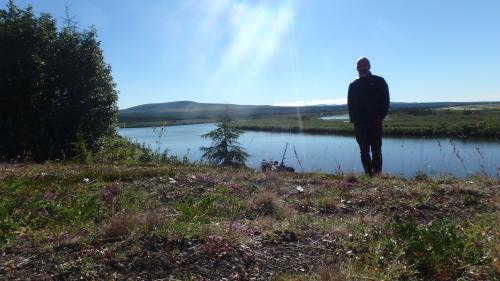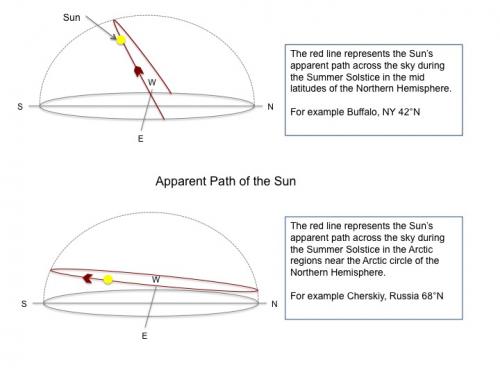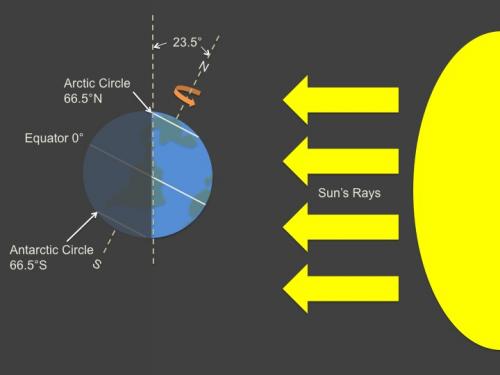24 hours of Light at 68°N
It's another sunny day here in Cherskiy. In fact, it's sunny during every hour of the day here right now. Some people have been asking about what it's like to experience 24 hours of daylight and why it happens, so I thought I would write a quick journal explaining why, when, and where this happens.
 Skotnicki in the morning sun on the banks of the Panteleha River in Siberia
Skotnicki in the morning sun on the banks of the Panteleha River in Siberia
What its like
The experience of constant sunlight is pretty cool, but does take a little getting used to. For example, I find myself sleeping with an eye mask to make it a bit darker at night. During the day it's nearly impossible to use the sun to tell direction. Back home in Buffalo, NY and anywhere in the lower 48 states, we get used to seeing the sun rise in the east and set in the west in its apparent path across the sky. It also rises higher until noon before it starts lowering towards the western horizon. Above the Arctic circle during the Summer Solstice, however, the sun doesn't rise or set, it just moves in a ring around the sky all day. So weird.
I created a quick diagram to help you visualize our situation here.
 Apparent Path of the Sun Diagram
Apparent Path of the Sun Diagram
Tilt
As you can see in the diagram, the Earth has a bit of a tilt to it that measures 23.5° degrees. This tilt of the Earth on its axis is what is responsible for the four different seasons go through throughout the year and the reason for 24 hours of light in the Arctic.
Things to remember
The Earth rotates on its axis once every 24 hours. The Earth will revolve around the Sun once a year or 365 days. The tilt of the Earth's axis is 23.5° degrees.
 Celestial objects during the Summer Solstice
Celestial objects during the Summer Solstice
Summer Solstice
The diagram shows the Earth tilting towards the Sun. This time of year is considered summer for anyone living in the Northern Hemisphere. The Summer Solstice begins on June 21, marking the first official day of summer and the longest amount of daylight for the year. In the Arctic, that is a full day of sunlight.
The diagram also illustrates that only one half of the Earth is illuminated by the Sun. So, as the Earth rotates on its axis over a 24-hour-period, it’s daylight for half of the planet and night for the other half. For example, take a look at the line for the Equator. Part of the line is in the dark side and part on the illuminated portion. So, as the Earth spins on its axis at that latitude, areas near the equator see the Sun for almost equal portions of light and dark during one day. Now consider the line for the Arctic Circle: regardless of how many times the Earth rotates on its axis it is always illuminated. Conversely, in the Southern Hemisphere, the Antarctic circle it will not see any light as it is tilted away from the Sun. Therefore when it’s Summer in the Arctic, it’s winter in the Antarctic.
Why is it cold then?
Why it is still so cold in the Arctic if there are 24 hours of sunlight? Well, it is considerably warmer here in the summer than what it would be like during the winter when Cherskiy receives 24 hours of darkness. The average temperature in the winter months are around -23°C (-10°F) on average and 11°C (51°F) in the Summer. Cherskiy is still at a latitude that is very far from the Equator and receives more indirect light than areas at lower latitudes, therefore the sun’s effect is lessened.
 Field of cotton grass in Cherskiy, Russia
Field of cotton grass in Cherskiy, Russia

Comments